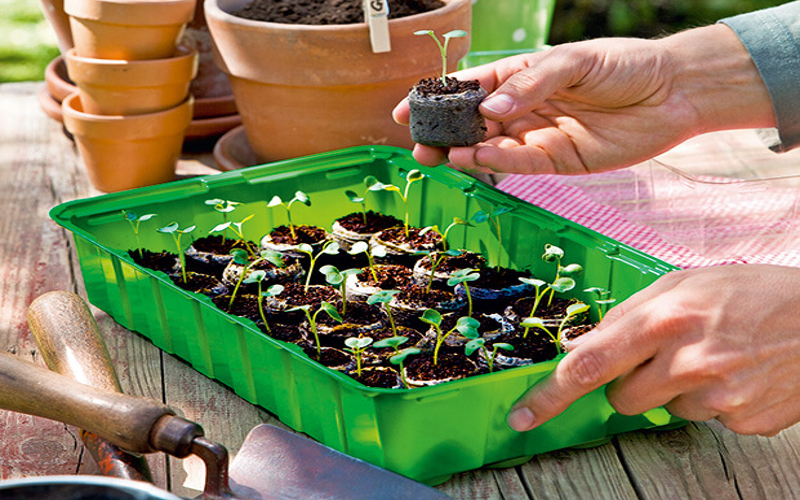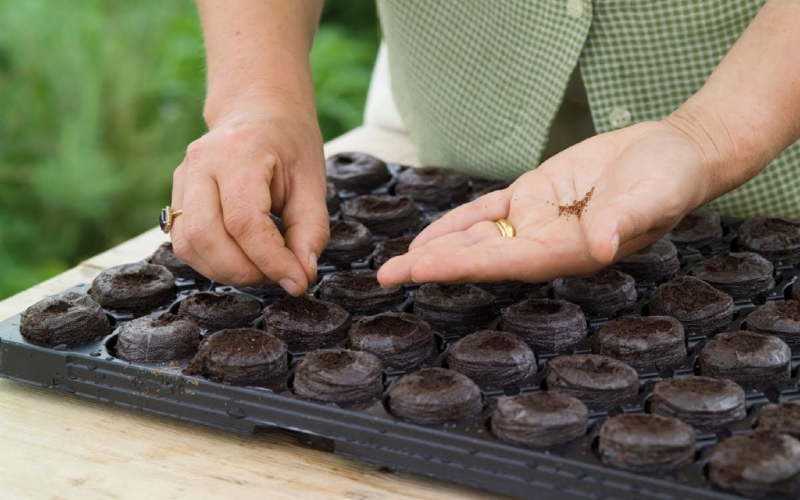Planting with coconut pellets: Why should you use it for your garden?
Planting with coconut pellets: Why should you use it for your garden?

If you enjoy planting but hate the hassle attached to it, you might want to try coconut pellets. For germination of seeds, pellets are an easy, fast, and non-messy method. Furthermore, compared to non-renewable peat pellets, coir discs for seed planting are more friendly to the environment. Let’s learn more about this organic material and why you should use it with Tropicoco Vietnam today!
What are coconut pellets?
Coconut pellets (also known as coir discs) are made from coconut fibres, a by-product of harvesting coconuts. The material contains absolutely no peat, which makes it ideal for starting seedlings. It is also eco-friendly, easy to handle, and does not cause any mess. Therefore, the material is a good alternative to traditional pellets.
Benefits of planting with coconut pellets
 Coir pellets are indeed an all-in-one solution to great soil. It is known to offer a variety of benefits to the garden. Let’s find out what the advantages are with Tropicoco Vietnam down below:
Coir pellets are indeed an all-in-one solution to great soil. It is known to offer a variety of benefits to the garden. Let’s find out what the advantages are with Tropicoco Vietnam down below:
Coconut pellets deliver fast and efficient results
When adding soil to a planting tray, it is usually impossible to avoid dirt getting all over the place and making a big mess. However, you can stay away from that trouble by using coconut pellets. Because the material provides enough soil to perfectly fit into a planting tray, you can avoid the clean-up and get the job done faster. Not only that, coco coir pellets can speed up the seed growing process as it offers a comfortable space to develop within, For this reason, the material encourages your seeds to germinate quickly.
Coconut pellets are fungus-free
In addition to being less messy, coconut pellets can solve the problem of damping off. This fungal infection is likely to be transmitted through the soil and unsanitary starting trays. Newly sprouted seedlings are one of its favorite targets to attack. This disease causes the stems to weaken, which ultimately leads to plants’ deaths. Wet conditions and low temperatures are also some of the factors that contribute to the problem.
Luckily, coir pellets for seed planting are completely fungus-free. Even though the material absorbs and holds a great amount of water, it doesn’t become supersaturated or soggy. Besides that, coco coir pellets can improve root formation significantly.
Coconut pellets raise healthy seedlings
Coco coir is a fibrous material that provides great air circulation for seedlings. Another benefit of using coir is that it makes the transplant process easier. When it comes to pulling plants out of the starter tray, coconut pellets can help you avoid shocking the plants by uprooting them.
In other words, the material will keep the root system safely intact during the transplant. Also, coir pellets are self-contained, allowing it to provide a nutrient-dense environment for your plants to grow. Therefore, if you are new to the gardening world, these pellets are a great way to start your garden.
How to use coconut pellets for seed starting
 The process of preparing coconut pellets for seed starting is actually simpler than you think. Here is a step-by-step guide on how you can prep it properly:
The process of preparing coconut pellets for seed starting is actually simpler than you think. Here is a step-by-step guide on how you can prep it properly:
Step 1: Expand the pellets
Before you can use coir pellets for the germination of seedlings, you must first soak them in water. Prepare a waterproof tray to put in the pellets. Make sure that the small imprinted hole is facing up. Then, pour warm water over the discs and wait for them to expand.
Step 2: Sow the seed
Once the discs are fully expanded, place two seeds in every pellet. You can control the planting depth by pinching or compacting the material. Be sure to label your tray to identify the seedlings. After that, use either a clear plastic lid or plastic wrap to retain moisture.
Step 3: Provide light
It is best to place the tray under grow lights or near a sunny window. While the seeds germinate, you should ensure that the pellets are evenly moist. It is usually sufficient to add a little water to the bottom of the tray once a day.
Step 4: Germination
Once the seeds have germinated and the cotyledons have opened, it is the perfect time for you to remove the plastic cover. Proceed to water once daily to keep the pellets evenly moist.
Step 5: Provide nutrients
By the time the seedlings have their second or third set of true leaves, their roots usually penetrate the netting. For tall, healthy transplants, it is recommended to either fertilize at this time or plant the seedlings, pellets, and everything else in a small pot.
Step 6: Transplant seedlings
When the seedlings are ready for transplant, harden off the plants right away. Also, a huge benefit of coconut pellets is that the material allows you to make direct planting into the garden.
Conclusion
As you can see, coconut pellets are highly beneficial in the garden. It is also easy to use, which makes it a perfect choice for beginners. If you find the information above helpful, make sure to visit Tropicoco’s blog daily to read more exciting articles. Since 2016, the company has been supplying high-quality coco coir substrates. Contact Tropicoco Vietnam now to receive products’ recommendations and buying rules.
Contact information
Tropicoco – The best substrate
Address: No.20 Ngan Long Villa, Nguyen Huu Tho Street, Nha Be District, Ho Chi Minh City
Email: giathe@tropical.vn
Hotline: +84 983230879
Open Hours: Mon-Sat: 8.00AM-5.00PM; Sunday: Closed

